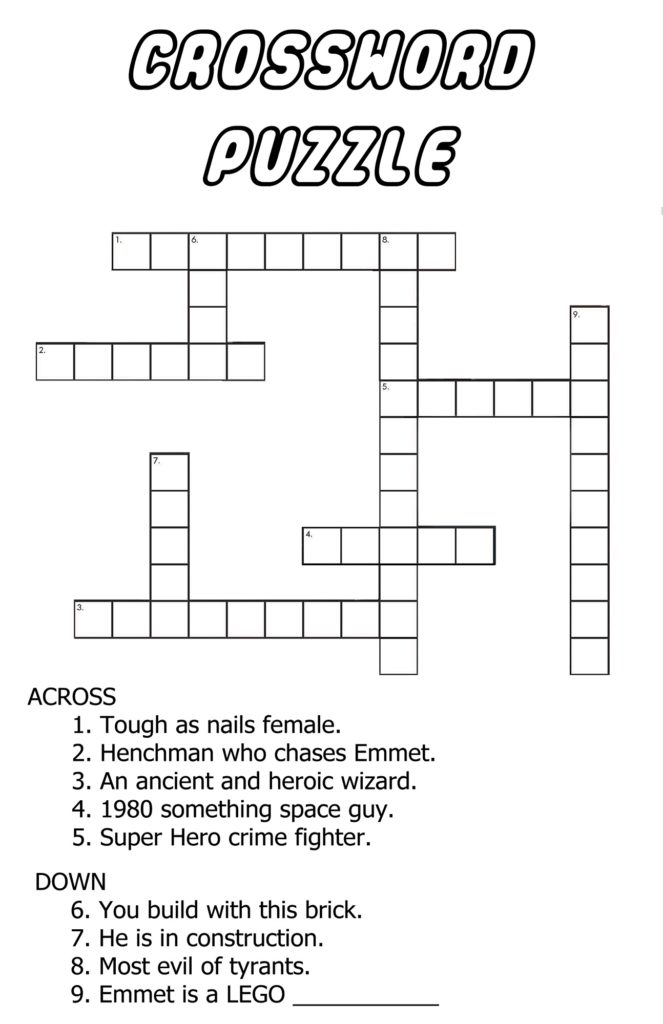

Some puzzles even get creative personal touches. Particularly clever clues get question marks (like “Many moons?” for DERRIERES). In the 1980s and ’90s, creative and accessible puzzles became the norm, including twists like puns, anagrams and pop culture jokes. Lars Morris’s daring diagramless crossword puzzle from Feb. One of the most daring was a diagramless puzzle, in which puzzlers were given a blank grid and had to ink in their own structural black squares as well as the answers to fill it. The next provider, the United Feature Syndicate, incorporated variety in the late 1930s. In the first era of The Daily crosswords, clues were not very creative, primarily basing themselves in definitions and facts, such as “Son of Seth” for the answer ENOS or “Memoranda” for NOTES. The very first Stanford crossword was published not by The Daily but by the satirical campus magazine “The Chaparral,” which made a puzzle with humorous and scandalous clues in 1925. Indeed, the Tribune Media puzzles were a step down from the clever puzzles of Stanford’s past.

(Photo: The Stanford Daily Archives) Clever crosswords through the years A 2003 Daily cartoon illustrating readers’ dismay at the return of the crossword in the form of the Tribune. Students longed for the creativity of The New York Times crossword, which The Daily had stopped publishing in 2003 due to its “prohibitive” cost and had replaced with the cheaper Tribune crossword. The puzzles it provided were lambasted as a “sad excuse for an inkblot.” Columnist Barrett Sheridan ’06 claimed that “The Daily crossword deserve to die” for its simple but poorly worded clues, clunky formatting and lack of creative wordplay. Tribune Media Services, a provider of the crosswords, drew anger during its 11-year reign in the early 2000s. When the crossword was canceled in 1968, 39 students signed a petition “respectfully requesting of the powers that be that our educational and entertainment goals and desires be fulfilled by the inclusion of a crossword puzzle in the venerable Daily.” The Daily editors claimed the crossword was “not worth it” and canceled it again in 1974, but four years later, they began publishing syndicated New York Times crosswords every day.Īt certain points, students have disparaged The Daily’s crosswords. “I used to work industriously at them in my cold, cold 8 o’clocks, but since you’ve done away with them I have no incentive to scramble out of bed and wend my way to class,” one puzzler protested. The first run of the crossword ended after just two months in 1935, and letters to the editor poured in. Whenever the puzzle was canceled or suspended, readers complained. The Daily crossword has changed hands numerous times throughout the feature’s history, from various companies that sell syndicated crosswords to students taking up the mantle of “Crossword Editor.” The changes always spur strong reactions from readers, reflecting the essential place that puzzles hold in their hearts.

Margaret Farrar, the first crossword editor for the Times, decided that the world needed a distraction from the tragedies. The New York Times initially refused to publish a crossword, calling it a “sinful waste,” but was convinced to do so in the midst of World War II. The puzzle’s role in distracting and entertaining the student body may seem trivial, but the history of the crossword in major newspapers suggests that it provides a vital service. An informal poll in 1986 concluded that one in four Daily readers went straight to the crossword when they opened the paper and reported that many saved it for class. Before cell phones, the best way to entertain yourself in a dreary lecture was to pull out that morning’s edition of The Daily and work on the crossword. “This will have no impact on your sex life,” they admitted cheekily, “but we hope you will enjoy it.” A welcome distractionįor most of its history, The Daily crossword was a mindless in-class distraction for tired students. The Daily announced the crossword’s return in 1978 “to relieve classroom boredom and add zest” to student life.

Paging through the archives, you discover the spirit of Stanford’s many word nerds through the ages.įor example, the prim formality of the 1930s announcement gave way to the boisterous ’70s. It has been canceled and revived many times, each time with its own flavor. The crossword proved popular, but not without its changes and controversies through its 88-year history. “The permanence of this feature depends on the popularity accorded their innovation.”
#Very large power of ten crossword series#
“To give students ever more service and pleasure The Daily starts today a series of Crossword Puzzles,” it wrote. On April 2, 1935, The Stanford Daily announced its first crossword with great fanfare.


 0 kommentar(er)
0 kommentar(er)
